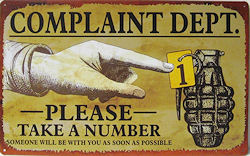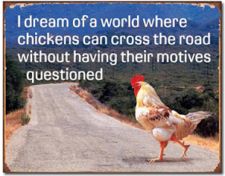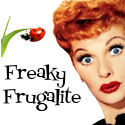I am fond of Russian history. I have read numerous books about the Romanov dynasty (the last Russian monarchy) because of their connection to Queen Victoria (the last Tsarina Romanov was the grand-daughter of Victoria). Something last week made me remember the Faberge Egg… I don’t remember now what that was, but I wanted to write a little about the egg.  The Faberge Eggs are perhaps the most exquisite works of art ever created in the world. Read on, and you’ll see!
The Faberge Eggs are perhaps the most exquisite works of art ever created in the world. Read on, and you’ll see!
On Easter Day, 1885, the Tsar Alexander III had a special 20th anniversary gift for his lovely wife, Tsarina Maria Fedorovna. Easter Day is the most celebrated holiday for the Russian Orthodox Church, and the Tsar’s anniversary made it a celebrated occasion. Through the palace doors walked a young and talented artisan, Peter Carl Faberge. He carried a tiny box to the Tsar, who set it on the table before his wife. The Tsarina gasped at the gift inside: it was an enameled egg with a golden yolk. Inside the yolk was a golden hen, and inside the hen was a tiny crown of diamonds and rubies. It became known as the first Faberge Egg.


Photos from Faberge Hen Egg.
Tsar Alexander commissioned Peter Carl Faberge to create a new and different egg every year, to give to his wife on Easter Day. Faberge himself set up a workshop in St. Petersburg, and commissioned a large group of skilled jewelers, craftsman, and artists. It took one who year to design, create, and complete the egg for the Easter celebration.
The Faberge Eggs always had a personal meaning to them. One egg given to the Tsarina Maria was a star sapphire egg with rose diamonds, emeralds, and gold leaves. Inside the egg is a tiny folding screen of minature paintings- duplicates of the paintings that hung in the places that the Tsarina had spent in Denmark as a child. Other eggs have portraits of ancestors and the royal family, scenes depicting momentuous events (such as a coronation), or eggs honoring the birth of a male child.



Photos from Faberge Eggs.
Tsar Alexander died unexpectedly in 1894. His eldest son, Nicolas, was terrified and completely unprepared to be Tsar. So he continued everything his father did, in politics and including the tradition of the Faberge Egg, for his mother the Empress Dowager and Nicolas’ new wife from Germany (Victoria’s granddaughter). The designs of the eggs just seemed to get more detailed and exquisite every year. All the world’s most prized materials were used- gold, silver, rubies, diamonds, abalone, purpurine, and pearl.


Photo from Wikipedia.

Photo from Wikipedia.
The eggs are breathtakingly beautiful. Some of the eggs had working parts and would spin or open. Some opened to reveal beautiful portraits or painted landscapes. One egg- my favorite- has a globe made of burnished steel and gold with the territory of Russia etched into it, and it spins. The egg sits on an elaborate stand of purpurine and enamel.


Photos from Faberge Egg.
Part of the mystique of the beautiful Faberge Egg is that it is steeped in tragedy. During the reign of Nicolas, Russia was starting to rumble with revolution. The people had gone through the distresses and starvations of World War I, and they were resentful of the wealth and decadence from the Imperial Palace. Lenin and Trotsky found their opportunity to stir up the people to revolt and seize Russia’s government and resources for itself. The people did not realize that they were merely exchanging a weak monarchy with a much worse communist regime of tyranny. The Imperial family was murdered on July 17, 1918. Their bodies and personal items were thrown into a hole dug in the forest and burned with hydrochloric acid. The location of their remains were not known for many years, and there was a legend that the youngest princess, Anastasia, had survived (not to be).
The Faberge Eggs are located all over the world, now. Many are in public museums (including in the Kremlin), and a few are in private collections. Some eggs are lost. I think the eggs are just so beautiful. The craftsmanship is artful and delicate. Just so beautiful.
If you’d like to see photos of more Faberge Eggs and read a little about their history, there’s a good site about them here, called Mieks Faberge Eggs. The photos are wonderful and they often show what is inside the eggs.






 Here is where I express my zany, creative, motherly side. Read more
Here is where I express my zany, creative, motherly side. Read more 






















November 17, 2008 at 7:30 pm
It is amazing how intricate the details are on the eggs. They are very beautiful. Very interesting post.
November 17, 2008 at 7:33 pm
An exquisite post…the eggs are extraordinary and the history so rich…and tragic…glad the so many of the eggs survived…again, lovely post!!
November 18, 2008 at 1:03 am
I really enjoyed reading your post. I, too, enjoy reading and studying about the Tsar and Russian history. I remember as a child spending hours reading Nicolas and Alexandra. The eggs are just stunning.
November 18, 2008 at 9:45 am
I’ve always loved Faberge eggs, because of their beauty and creativity. Several years ago I was lucky enough to see a Russian exhibit that featured some of the original eggs from the collection of Nicholas and Alexandria. Great posting!
November 18, 2008 at 3:49 pm
Wow! Those eggs are art! Great post!
November 20, 2008 at 2:31 am
wow! way cool wanna feature this too c; and link it back to you c:
December 12, 2008 at 5:20 pm
Hello,
I’m hoping someone can help me out…
I’m looking for a replica of the wedding gift that Alexandra gave to Nicholas. (If she even gave him anything?)
Thank you!
May 8, 2011 at 5:41 pm
Aren’t they lovely?? I love little boxes because they can hold tiny surprises and I think these eggs epitomize that concept. Great post!
September 5, 2012 at 3:15 pm
Interesting, I came upon this while looking up another subject.
Nice blog. They are wonderful little things are they not. Keep up
the good work, you have an interesting way of capturing the essence of the most obscure subjects. Looking at your other interests make this a site I will come back to.